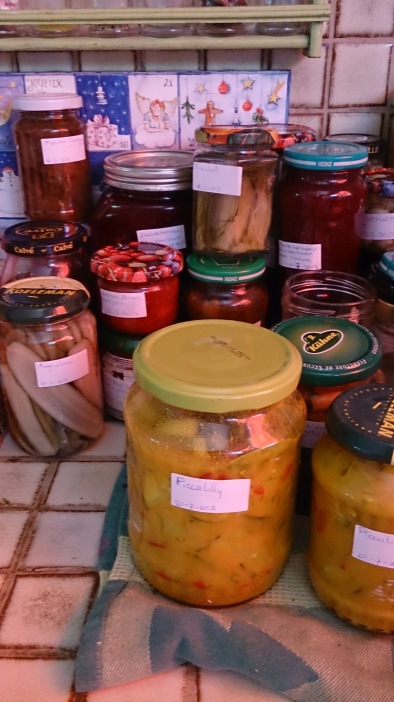The greenhouse
Of all the things I could have done the early start in the greenhouse/ windowsill was the best decision I made. As early as the end of January I started off by sowing the aubergines. They finally did produce in the summer season. The previous year t hey were always a bit late to really enjoy the produce.
hey were always a bit late to really enjoy the produce.
The slow start on the garden was partly caused by a desire to turn the earth double the usual depth. Presown vegetables were waiting in the greenhouse for a chance at the outdoors. Even the broad beans and silver onions had to wait… Then the rather wet start was followed by an extremely dry period. The rest of the beans did not stand a chance to sprout at all. It did have the funny effect that we could eat fresh beans straight up to the end of October.
The greenhouse was “inhabited” cucumbers, gherkins, peppers and aubergines. Even though the produce was very good, there were way too many little problems with mildew and little red spider mites. I’ve therefore decided to completely renew the soil. This might seem rather drastic, but this way I don’t have to worry about the winter. A good harsh winter might have helped a lot, were it not that there also started to grow some unfamiliar mushrooms…..therefore: time for drastic measures! Replacing the soil before the new season
Potatoes
The potatoes were starting off very uneven. A method to cover them up more evenly might be in order. The varieties… The red one, is not coming back next year, unless I find a variety that promises bigger potatoes. The blue potatoes…. still not nicer than my former Blaue Congo, but a decent harvest. The wet weather was definitely a problem, blight got a hold on part of the crop.
Tomatoes
The tomatoes survived longer than ever and yielded an amazing amount of delicious goodness. Especially the smaller cherry tomatoes were successful. The larger meat tomatoes had some trouble ripening before being affected by blight. For next year: trying to get them out of the rain to see if I can improve the late harvest. Previous years have shown that planting in rows was better than groups. The amount of wind and light that I can reach in rows is much greater. Making sure the plants are nice and sleek is in that case easier as well.
Kale
The kale field is still yielding while I write my conclusions. This year I was a bit late moving some of the young seedlings from the sowing patch. They did not like being moved. so the rest stayed very close together in the sowing patch. Thanks to the dill and fennel these plants were rather happy, but for next year: relocate them in time or put them in individual pots, if I can’t place them in the right spot at once.
The eternal kale plants are great for a constant supply of kale. The new pinkish savoy kale I tried was growing very well and is a nice decorative plant. Next year I’m considering putting some in the decorative garden as well.
The red kale somehow still needs more “food”, once again it was not really forming a nice dense head. Another no to the bok choi, it was growing as a very sturdy plant, not a nice wok vegetable.
Combination cultivation
Combining maize and pumpkin was a great success. Next year I won’t grow maize, but this combination is a keeper.
Fennel with the kale seemed to help confuse the butterflies. Next year I’ll have another go to test this once more.
Leave a comment